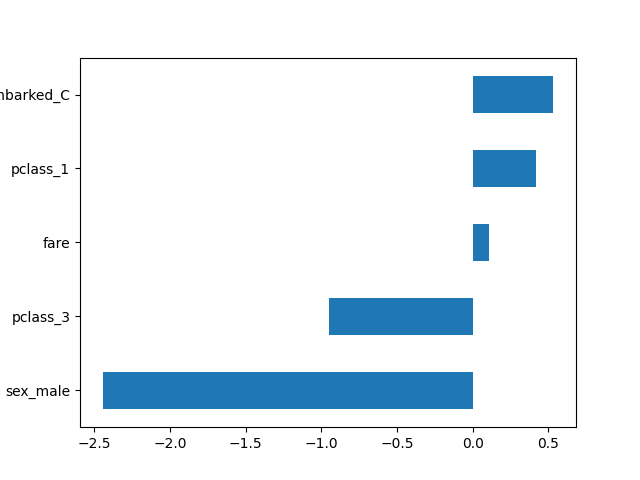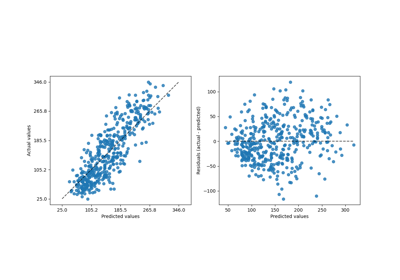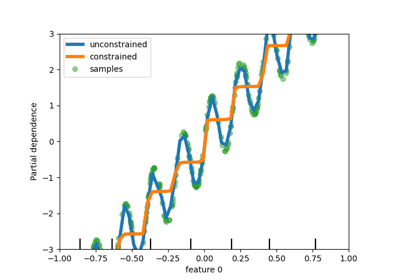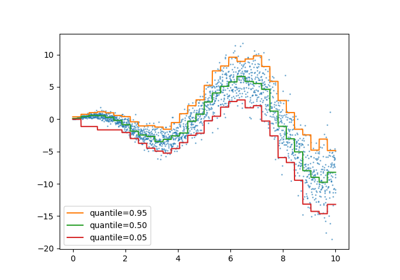Note
Go to the end to download the full example code or to run this example in your browser via JupyterLite or Binder
Introducing the set_output API#
This example will demonstrate the set_output API to configure transformers to
output pandas DataFrames. set_output can be configured per estimator by calling
the set_output method or globally by setting set_config(transform_output="pandas").
For details, see
SLEP018.
First, we load the iris dataset as a DataFrame to demonstrate the set_output API.
from sklearn.datasets import load_iris
from sklearn.model_selection import train_test_split
X, y = load_iris(as_frame=True, return_X_y=True)
X_train, X_test, y_train, y_test = train_test_split(X, y, stratify=y, random_state=0)
X_train.head()
To configure an estimator such as preprocessing.StandardScaler to return
DataFrames, call set_output. This feature requires pandas to be installed.
from sklearn.preprocessing import StandardScaler
scaler = StandardScaler().set_output(transform="pandas")
scaler.fit(X_train)
X_test_scaled = scaler.transform(X_test)
X_test_scaled.head()
set_output can be called after fit to configure transform after the fact.
scaler2 = StandardScaler()
scaler2.fit(X_train)
X_test_np = scaler2.transform(X_test)
print(f"Default output type: {type(X_test_np).__name__}")
scaler2.set_output(transform="pandas")
X_test_df = scaler2.transform(X_test)
print(f"Configured pandas output type: {type(X_test_df).__name__}")
Default output type: ndarray
Configured pandas output type: DataFrame
In a pipeline.Pipeline, set_output configures all steps to output
DataFrames.
from sklearn.feature_selection import SelectPercentile
from sklearn.linear_model import LogisticRegression
from sklearn.pipeline import make_pipeline
clf = make_pipeline(
StandardScaler(), SelectPercentile(percentile=75), LogisticRegression()
)
clf.set_output(transform="pandas")
clf.fit(X_train, y_train)
Each transformer in the pipeline is configured to return DataFrames. This means that the final logistic regression step contains the feature names of the input.
clf[-1].feature_names_in_
array(['sepal length (cm)', 'petal length (cm)', 'petal width (cm)'],
dtype=object)
Next we load the titanic dataset to demonstrate set_output with
compose.ColumnTransformer and heterogeneous data.
from sklearn.datasets import fetch_openml
X, y = fetch_openml("titanic", version=1, as_frame=True, return_X_y=True)
X_train, X_test, y_train, y_test = train_test_split(X, y, stratify=y)
The set_output API can be configured globally by using set_config and
setting transform_output to "pandas".
from sklearn import set_config
from sklearn.compose import ColumnTransformer
from sklearn.impute import SimpleImputer
from sklearn.preprocessing import OneHotEncoder, StandardScaler
set_config(transform_output="pandas")
num_pipe = make_pipeline(SimpleImputer(), StandardScaler())
num_cols = ["age", "fare"]
ct = ColumnTransformer(
(
("numerical", num_pipe, num_cols),
(
"categorical",
OneHotEncoder(
sparse_output=False, drop="if_binary", handle_unknown="ignore"
),
["embarked", "sex", "pclass"],
),
),
verbose_feature_names_out=False,
)
clf = make_pipeline(ct, SelectPercentile(percentile=50), LogisticRegression())
clf.fit(X_train, y_train)
clf.score(X_test, y_test)
0.7621951219512195
With the global configuration, all transformers output DataFrames. This allows us to easily plot the logistic regression coefficients with the corresponding feature names.
import pandas as pd
log_reg = clf[-1]
coef = pd.Series(log_reg.coef_.ravel(), index=log_reg.feature_names_in_)
_ = coef.sort_values().plot.barh()

In order to demonstrate the config_context functionality below, let
us first reset transform_output to its default value.
set_config(transform_output="default")
When configuring the output type with config_context the
configuration at the time when transform or fit_transform are
called is what counts. Setting these only when you construct or fit
the transformer has no effect.
from sklearn import config_context
scaler = StandardScaler()
scaler.fit(X_train[num_cols])
with config_context(transform_output="pandas"):
# the output of transform will be a Pandas DataFrame
X_test_scaled = scaler.transform(X_test[num_cols])
X_test_scaled.head()
outside of the context manager, the output will be a NumPy array
X_test_scaled = scaler.transform(X_test[num_cols])
X_test_scaled[:5]
array([[ 0.1511007 , -0.47922861],
[ nan, -0.18815268],
[-0.39329747, -0.26323428],
[-1.97545464, -0.26323428],
[ 2.53284267, 3.54606834]])
Total running time of the script: (0 minutes 0.132 seconds)
Related examples





